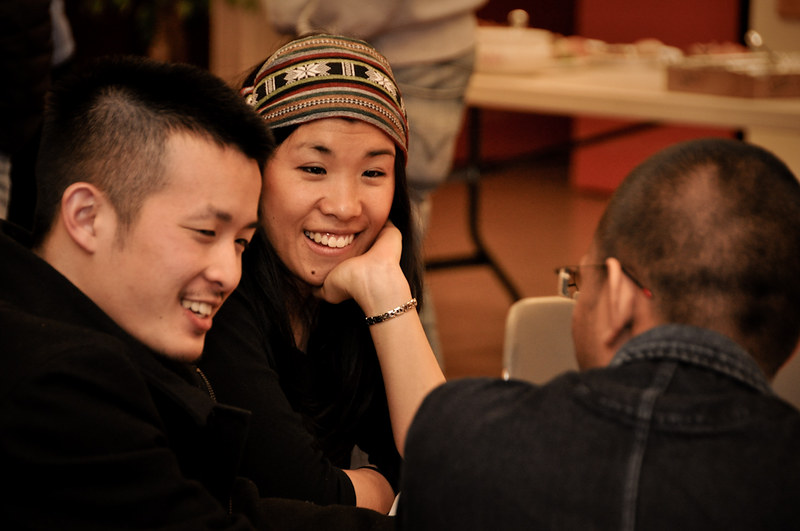Everyday Americans don’t understand the experiences of international students in the U.S., their value to the country, or the nexus between education, global talent and immigration on which the future of the U.S. hinges.

They arrive in the U.S. each August with dreams in their eyes and nerves in their hearts, their belongings usually contained in just two suitcases. Numbering 1.1 million, these global migrants seek the Made-in-America university degree coveted by students all over the world.
These international students—and especially those who become immigrants—have been the secret ingredient in America’s recipe for global success. But thanks to an unwelcoming environment in recent years and the impact of the pandemic, these bright students might be thinking twice about seeking the American dream, putting this country’s future in jeopardy.
My journey as an international student in the U.S. began in 1992, as one of 439,000 international students that year. Since then, through my work and in speaking to everyday Americans, I’ve come to realize that most do not truly understand the experiences of international students in the U.S., their value to the country, or the nexus between education, global talent and immigration on which the future of the U.S. hinges.
Yet at a time when college costs in the U.S. continue to soar, international students have been the invisible drivers of the massive engine of American higher education that depends on them, bringing in $38.7 billion to the U.S. economy each year and helping to create over 415,000 jobs. U.S. higher education is now one of America’s top six service exports, selling more university degrees to the rest of the world than either cars or medicines.
But the impact of international students goes much beyond an economic bottom line: With only about 11 percent of American undergraduates studying abroad, international students provide critical global exposure for their American classmates.
I have also learned how education is deeply connected to immigration, to the very definition of success in America. An American education has been the pathway for much of America’s global talent and many leaders, whether it is Nobel Prize laureates, tech gurus, authors or artists. When it comes to innovation and entrepreneurship, nearly one out of every four founders of a $1 billion U.S. start-up first came to America as an international student, and American companies founded by immigrants are worth an estimated $248 billion and have generated hundreds of thousands of U.S. jobs. Kamala Harris and Barack Obama also have a shared history: Harris’s parents were international students from India and Jamaica, and the senior Obama was a student from Kenya.
The pandemic has also underscored the importance of international students turned immigrants. Moderna’s immigrant cofounder, Noubar Afeyan, came to the U.S. as an international student, as did its CEO, Stéphane Bancel. Taiyan Yang of Gilead, which was behind the drug Remdesivir, and Peter Tsai, the inventor of the N95 respiratory mask, both came to the U.S. as international students from Taiwan. America’s gain from the journey from education to immigration has existed for the past 200 years—yet this pathway has become increasingly broken in recent times.
I know from my own experience and that of so many others how difficult it is to persist in the U.S. International students who want to stay face a downward spiral into a deep abyss of rules, visas, delays, fear and worst of all, a crippling uncertainty about their future. There is a troubled tango between an individual’s aspirations and a country’s immigration policies
International students vote with their feet, and America’s recent losses in attracting global talent have been gains for other competing countries. Due to the dual negative impact of regressive policies as well as COVID-19, the U.S. is currently on track to see the lowest enrollment of new international students since World War II, with much of this lost talent being diverted to the U.K., Canada and Australia. Some accounts estimate overall higher education enrollment in the US will decline by 15 percent and international enrollments will decline by 25 percent due to the pandemic, resulting in an estimated shortfall of $23 billion for U.S. institutions. The S&P Global has declared this a “material risk” for US colleges and universities.
History also shows us that the fear of the “other” emerges ever so often, whether as the 1882 Chinese Exclusion Act or the rise of hate crimes against Asian Americans in 2021. In 2017 when an angry Adam Purinton yelled “Get out of my country” before shooting Srinivas Kuchibhotla—an Indian-born engineer and former international student—in a small bar in Kansas, the attack felt visceral to me in a way that all those negative encounters at immigration checkpoints had not.
Yet it is exactly times like these, with growing nationalism and xenophobia, that underscore why America needs to keep its minds and doors open, where American students also learn from their international classmates. U.S. colleges and universities will recover from the pandemic, and the fall 2021 semester offers hope, but recovering from the damage of an unwelcoming environment will require more work.
Something more fundamental is at risk here: The very idea of America as a beacon, as a country of possibility. Along with its music, films and literature, a Made-in-America credential has been the strongest form of influence and soft power for the U.S., shaping the thinking of millions, many of whom have returned home to lead their countries, found American-style universities, and build ties with the U.S.
Despite the best intentions of the Biden-Harris administration, my book reveals how many of the challenges that international students and immigrants face have existed for years. Undoing this cumulative damage will take time. But what has also endured is the appeal of an American world-class education that represents freedom of thought and the ability to pursue one’s own unique version of the American dream.
The attraction of an American classroom has held strong over the years, and it holds strong today. But will it persist in the future? That depends on America and whether it wants the world in its classrooms, streets and homes.
Up next:





